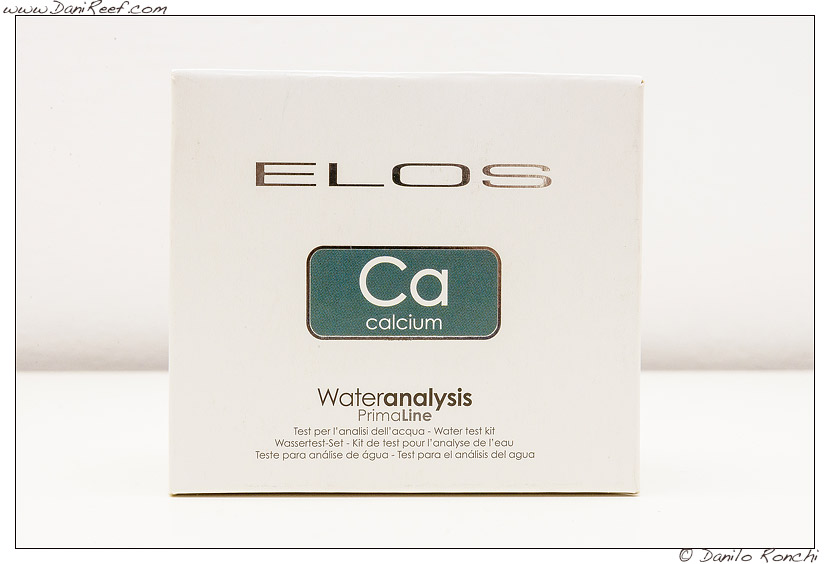
Today I present to you the Elos water test kit for Calcium.
The test kit consists of a good-sized box that contains a paper with instructions, a leaflet, one glass tube with the Elos symbol and its plastic cap, three small bottles containing the liquid reagent called A, C, and D, a B powder reagent, a syringe, and the classic Elos measuring spoon.
The highest resolution of the test is 10 ppm.
Unfortunately, the box is too short to store the bottles upright – the “A” and “C” reagent bottles must be inserted horizontally.
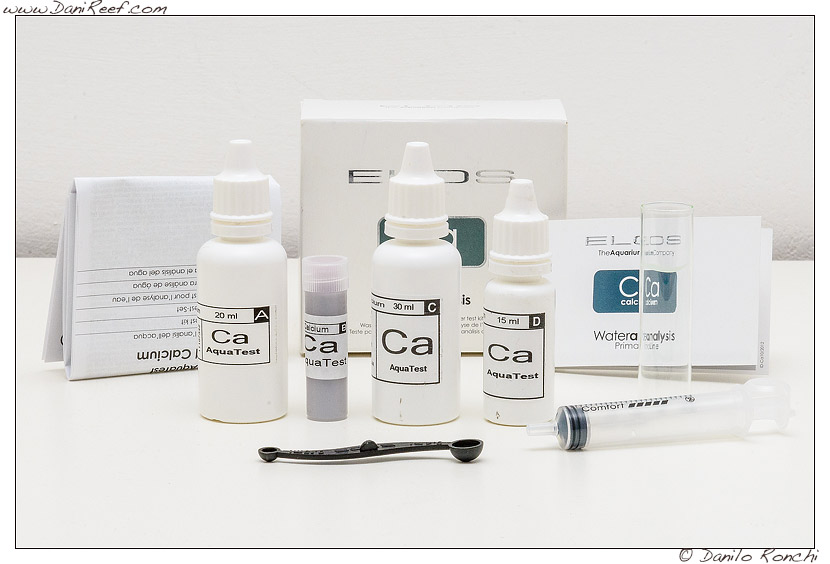
The test is quite simple:
Fill the tube with 5 ml of aquarium water, using the provided syringe.
Add 7 drops of reagent from the “A” bottle and 0.15 ml of powder from the “B” to the test vial.
Close the tube with the provided cap, being careful not to break the tube, and shake gently for 30 seconds.
Decide whether to use the high-resolution test, C, at 10 ppm, or low-resolution, D, at 50 ppm. I generally prefer an happy medium of the two.
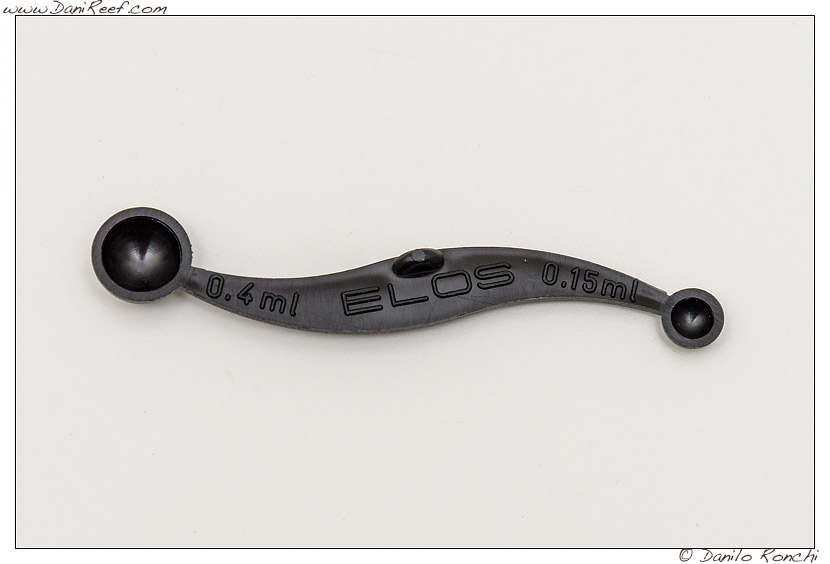
Next, add drops from the C or D bottle until the color changes from purple to blue. The change is very easy to see.
Multiply the number of drops used to enact the color change by 10 or 50, depending on the reagent used.
For example, if you used 8 drops of reagent C, you would multiply 8×50 = 400 ppm, or if you used 42 drops of reagent D, you would have 42×10, or 420 ppm of calcium in the aquarium.
The method that I prefer to use, which is also suggested by the Elos‘s leaflet, is to use the C reagent for the first 6-7 drops, or until reaching a value of 300-350 ppm of calcium, and then finish with the D reagent, which gives a much more refined reading.
The only difference between the C and D reagents is the dilution.

The Elos tests for magnesium (here) and alkalinity (here) work in a similar way; they are tritation tests without predetermined values. The enclosed cards do not have a color reference scale.
The Elos test uses a calibrated dropper and the result is great. I advise you to swirl the bottle before using the reagent, which will lessen the chance of the drop’s volume being thrown off by trapped air.
The back of the box and the leaflet have a list of the reagents used, and the box is stamped with the test’s expiration date.
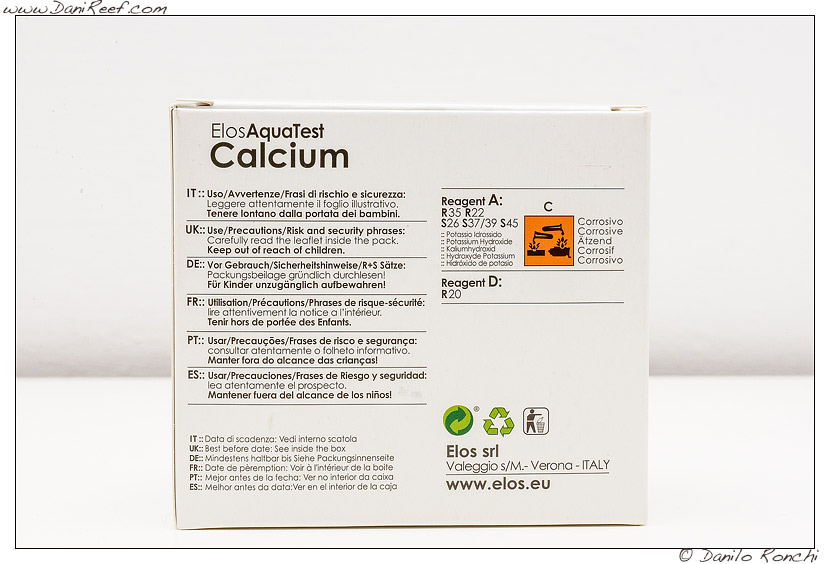
All tests should be used no more than six months from their first use. Incorrect storage can ruin the reagents and give you false readings.
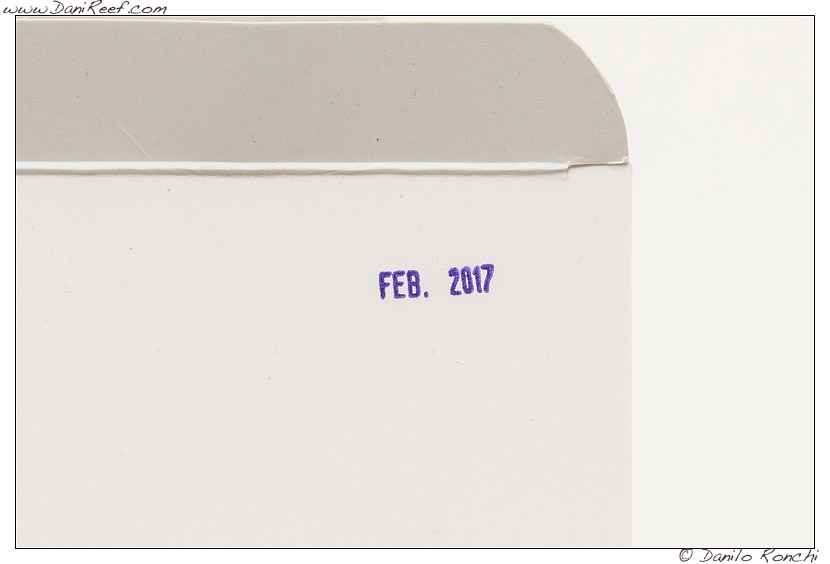
I recommend you always use your eye to evaluate the aquarium, do not rely solely on the test. If the test detects a value that is clearly wrong, you should test again before taking any countermeasures. Always check the expiration date for these perishable reagents, especially if they have been exposed to moisture and heat.
Conclusion
The test is not cheap; it costs 24,28 €, but it gives accurate results.
As the values read absolutely true, I highly recommend this test kit, even though the price is a bit high.
As an aside, I also reviewed the Elos test kit for alkalinity KH (here) and Magnesium (here).










0 Comments